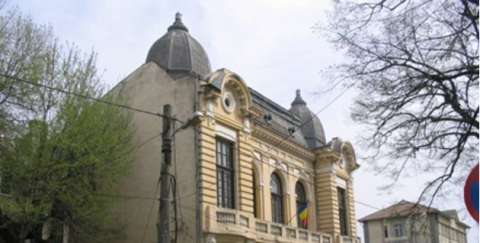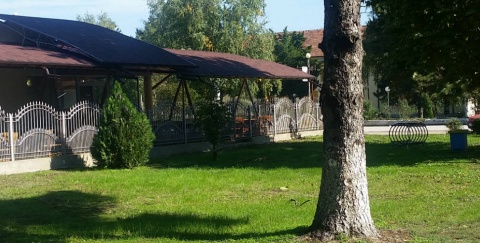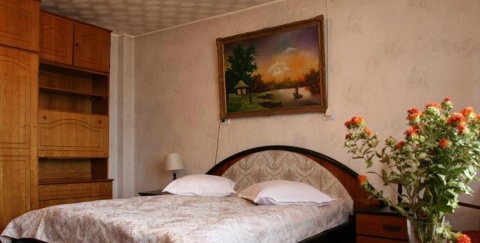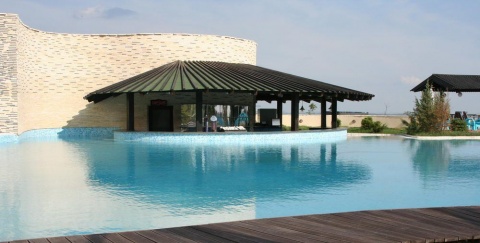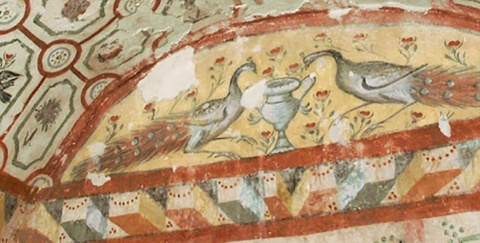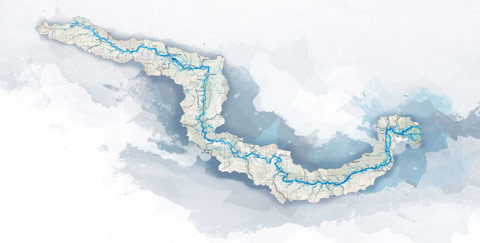
The history of Silistra goes back some 2,000 years. Having constructed the first Roman fortress here in 29 AD, it was in 106 AD that the most important of the Roman military forces along the Lower Danube, XI Claudia Legion, settled here and remained until the 6th century AD. The Roman city Durostorum, built around the fortress, got municipality status in 167 AD. The 2nd and the 3rd centuries were marked by prosperity, while in the 4th century the city mostly defended itself from invaders from the north. Emperors Diocletian and Constantine the Great visited Durostorum during the persecutions of the early Christians. The first among a number of martyrs who died here in 303–313 AD was St Dasius, who was decapitated by sword. A bone of his right arm is kept as a relic in the Cathedral of Sts Peter and Paul in Silistra. It was donated by Pope John Paul II, who visited Bulgaria in 2002. Other martyrs were St. Julius, St Valentinus, St Pazzicratos, St Markinianus, St Nicandros, St Maximus, St Dadas, St Quintilianus and St Calinicos, followed by St Emilianus, who died in a fire in 362 AD. The coffins and remains of St Maximus, St Dadas, and St Quintilianus were found in an early Christian mausoleum on the site of the ancient necropolis (2nd–4th century AD). In the necropolis, located just 500 metres from the camp of the Roman legion, there is also a tomb of a high-ranking Roman magistrate (late 4th century AD). But the most impressive, and nowadays the most attractive and the most talked about, is the Roman tomb in the central part of the cemetery, probably from the early 4th century.
Discovered in 1942 by coincidence, the interior of the unicameral vaulted monument with brick walls (3.30 x 2.60 m, 2.30 m high) is covered with beautiful mural paintings in the fresco al secco technique. The west wall portrays the bareheaded master of the tomb, an aristocrat, most probably a high-ranking military officer, dressed in a long, ornamental purple tunic. Standing on the right is probably his wife, also wearing a tunic, adorned with a pearl necklace and earrings and holding a flower. On the top, two peacocks are standing on either side of high vessel (kantharos) for water or wine. A beautiful pattern decorates the ceiling. Servants are depicted on the north and some ladies on the south wall. The most beautiful of all is a young woman carrying a boy. Although painted in the pagan style fashionable during the rule of Constantine the Great, when these frescoes were made is still a matter of debate. Some scientists date it around 380 AD, others much earlier. Anyway, the tomb was never used. It is very likely that the owners left Silistra during one of the invasions of the Goths. Today, the ruins of Durostorum are part of the national architectural and archaeological reserve Durostorum–Drustar–Silistra, including parts Roman baths, theatres, temples, residences and the remains of the Roman fortress, which was demolished in 1810.
Don’t miss the Regional Historical Museum, whose archeological section covers an area of 400 m². Among the 62,000 exhibits in the museum, there are three hundred Roman bronze, iron, silver and golden artefacts. There is an initiative to install a 1:150 scale model of the ancient Durostorum fortress here as well. Silistra (population: 50,700) was awarded the European Commission Destination of Excellence (EDEN) in 2010. While you are there, visit the Turkish fort Medzhidy Tabia, built according to the plans of the German military engineer Helmuth von Moltke in the 19th century, and the oldest Armenian church in Bulgaria, the Apostolic Church of Surp Astvadzadzin (Holy Virgin Mary), built in 1620. The nearby Srebarna Nature Reserve (18 km to the west) is a haven for migrating birds and a UNESCO World Natural Heritage Site since 1985. Visit the Biosphere Reserve of Srebarna, lakeside eco trails and the Pelican Lake Guest House for tours, dinners and overnight stays (www.srebarnabirding.com).
DANUBE.TRAVEL has no control over the website content generated by users and/or visitors, neither such content represents a statement, opinion, recommendation or rating by DANUBE.TRAVEL. For further information please refer to DANUBE.TRAVEL – General Website Terms and Conditions of Use.
 EN
EN DE
DE
